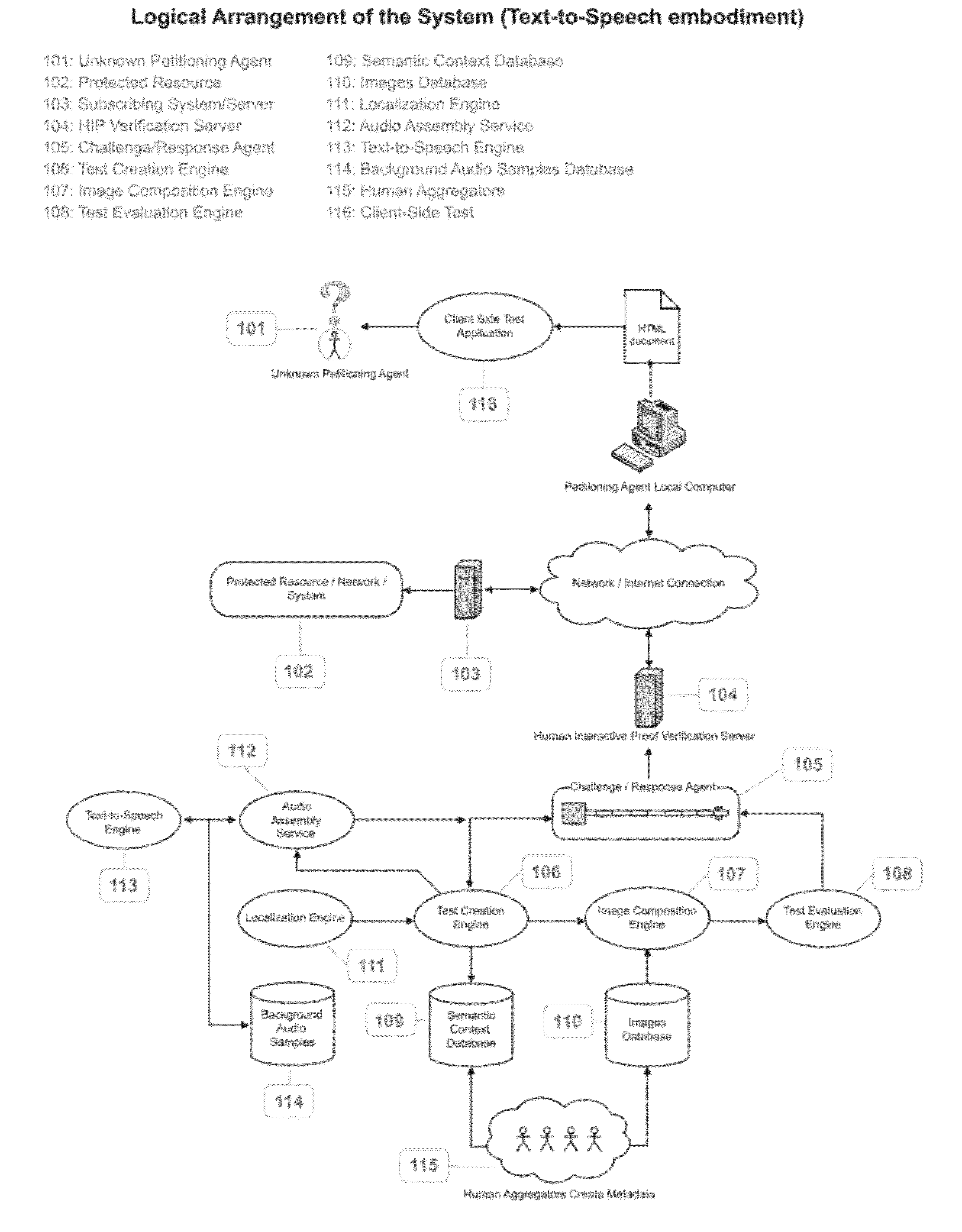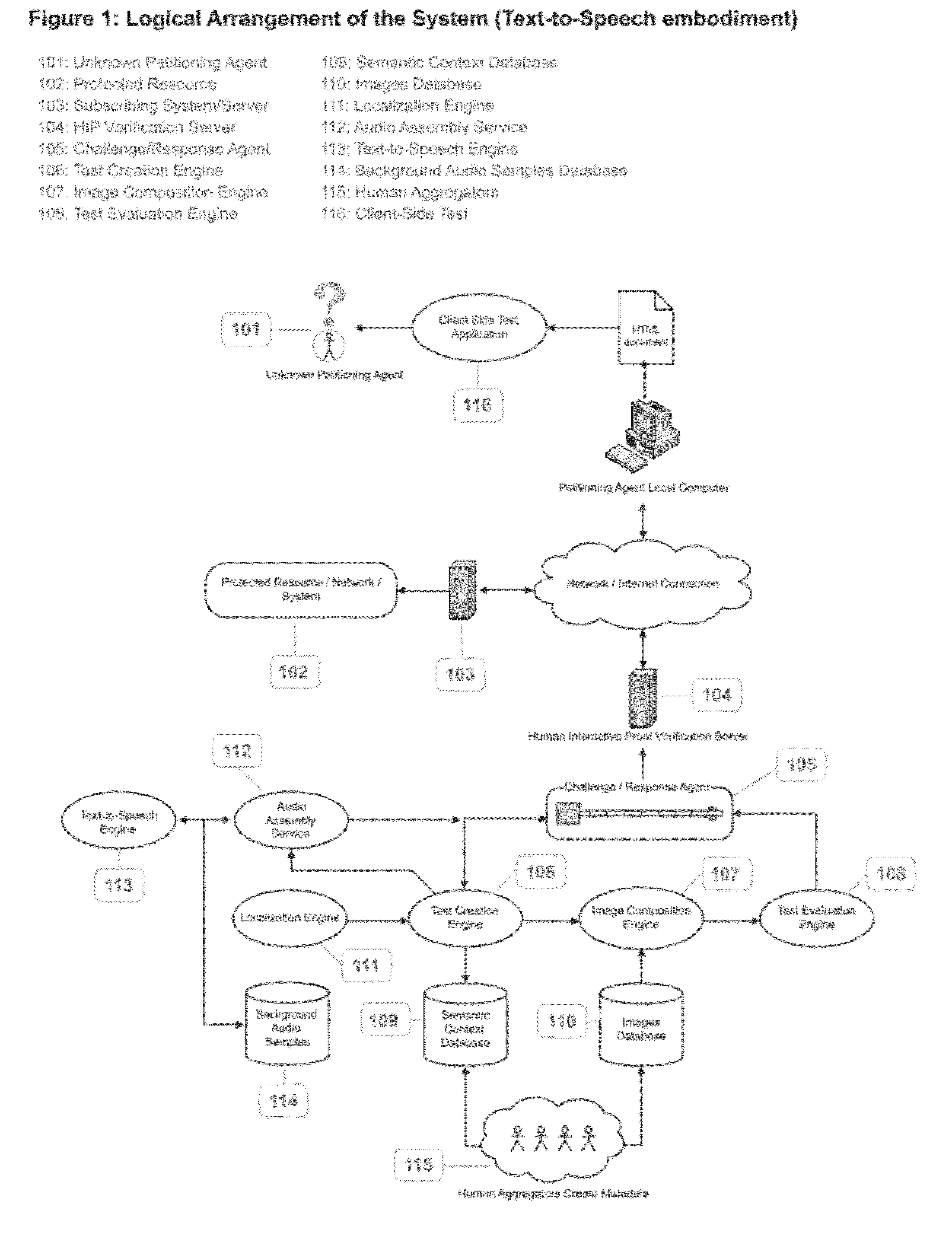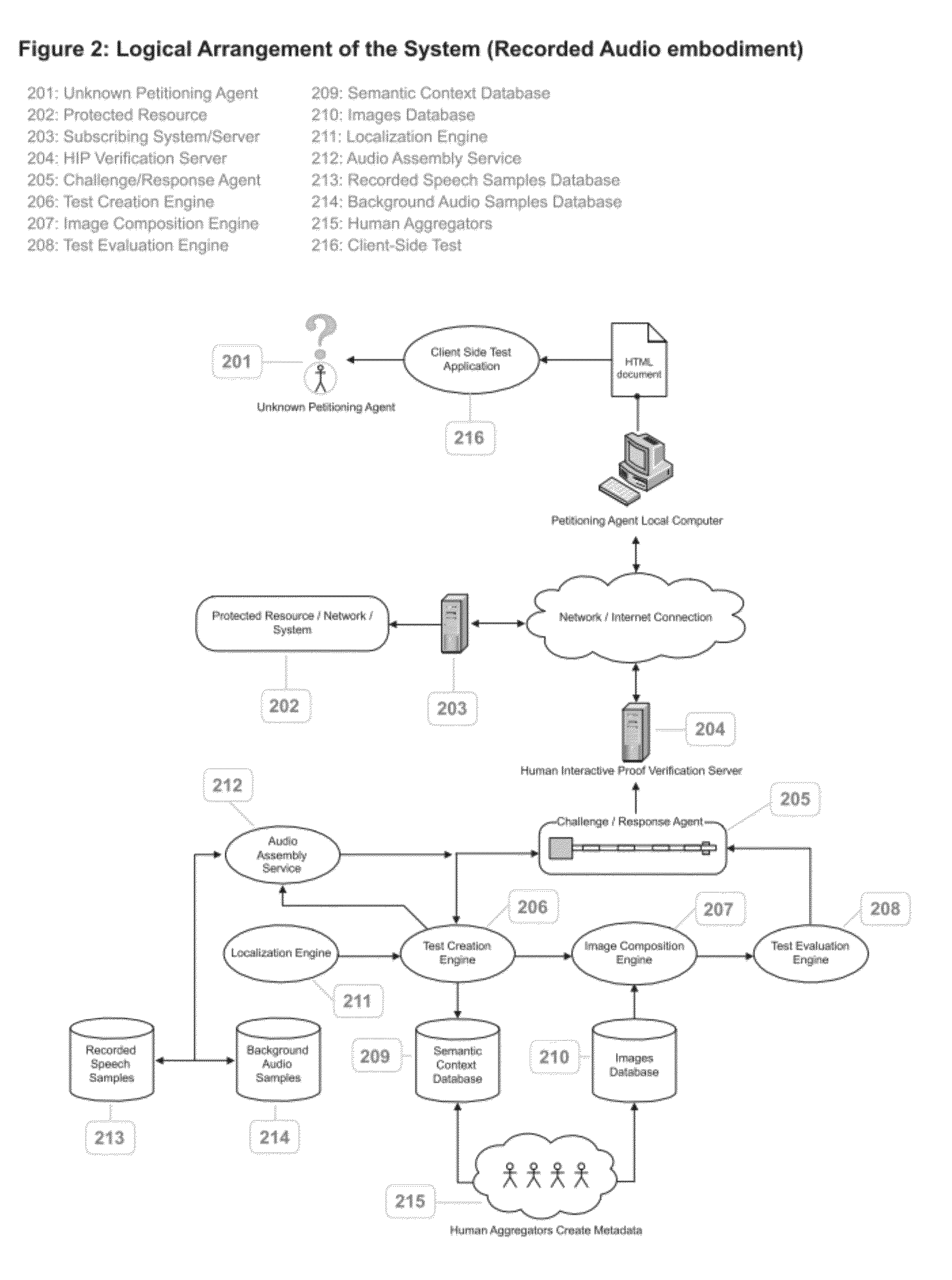System and Method for Delivering a Human Interactive Proof to the Visually Impaired by Means of Semantic Association of Objects
a technology of semantic association and human interaction, applied in the field of system and method for delivering human interactive proof to the visually impaired by means of semantic association of objects, can solve the problems of limited damage, unfavorable and increasing the burden on commercial and social networking applications on the internet. achieve the effect of strengthening consumer awareness of any brand
- Summary
- Abstract
- Description
- Claims
- Application Information
AI Technical Summary
Benefits of technology
Problems solved by technology
Method used
Image
Examples
Embodiment Construction
[0092]The invention is a system and method for delivering a Human Interactive Proof, (also called a reverse Turing test) to the visually impaired, for the purpose of restricting access to a computer system, resource, or network to live persons, and by extension for preventing the execution of automated scripts via an interface intended for human interaction.
[0093]In other words, it's a system to prevent spammers and malicious coders from exploiting web forms or information request pages that are intended for use by humans, and it does so in a way that makes it accessible to visually impaired persons.
[0094]As shown in FIG. 1, the system is resident on a plurality of servers connected to the Internet, and is available to organizations and entities which subscribe to the service [103] as a means of restricting access via the Internet to applications, services and resources that are resident on their own local computer systems, servers, and networks [102].
[0095]A Semantic Context Databa...
PUM
 Login to View More
Login to View More Abstract
Description
Claims
Application Information
 Login to View More
Login to View More - R&D
- Intellectual Property
- Life Sciences
- Materials
- Tech Scout
- Unparalleled Data Quality
- Higher Quality Content
- 60% Fewer Hallucinations
Browse by: Latest US Patents, China's latest patents, Technical Efficacy Thesaurus, Application Domain, Technology Topic, Popular Technical Reports.
© 2025 PatSnap. All rights reserved.Legal|Privacy policy|Modern Slavery Act Transparency Statement|Sitemap|About US| Contact US: help@patsnap.com



